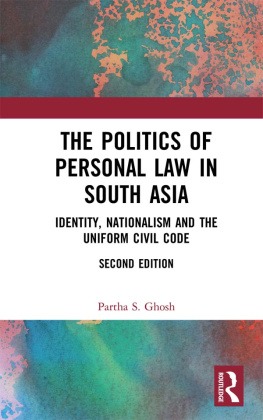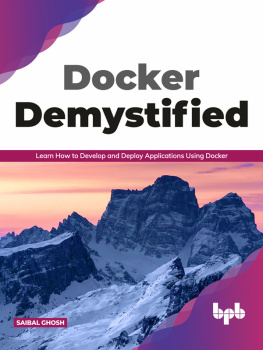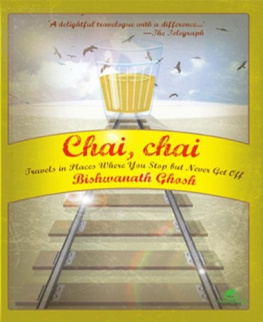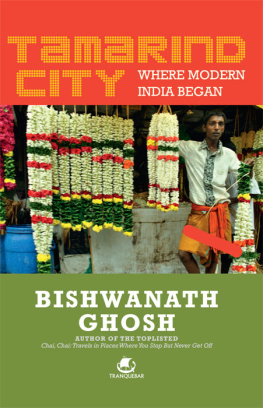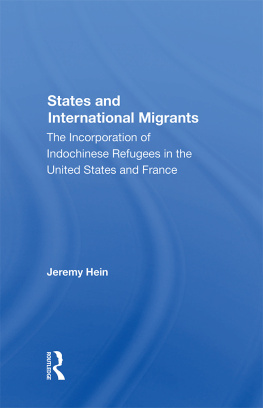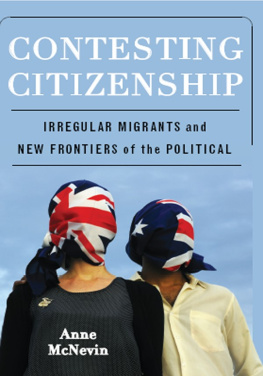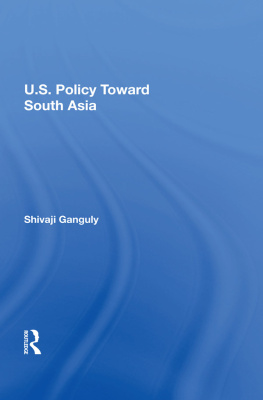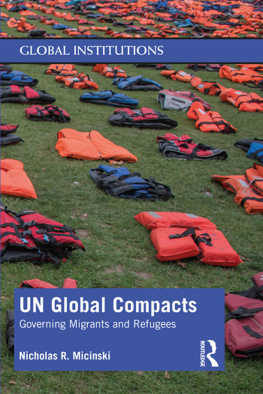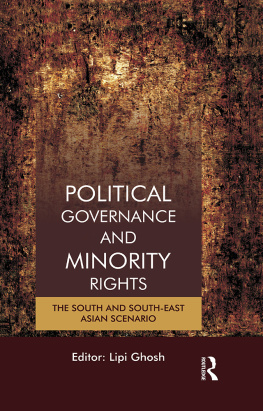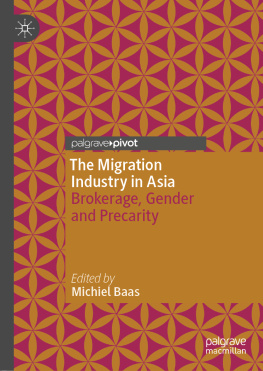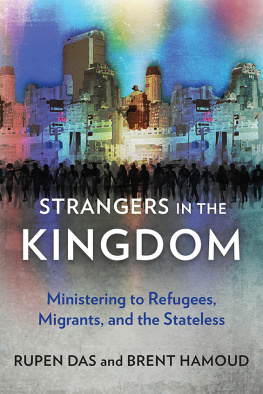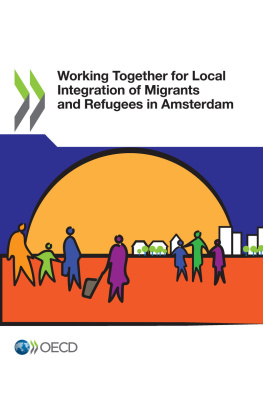Ghosh - Migrants, Refugees and the Stateless in South Asia
Here you can read online Ghosh - Migrants, Refugees and the Stateless in South Asia full text of the book (entire story) in english for free. Download pdf and epub, get meaning, cover and reviews about this ebook. year: 2016, publisher: SAGE Publications, genre: Politics. Description of the work, (preface) as well as reviews are available. Best literature library LitArk.com created for fans of good reading and offers a wide selection of genres:
Romance novel
Science fiction
Adventure
Detective
Science
History
Home and family
Prose
Art
Politics
Computer
Non-fiction
Religion
Business
Children
Humor
Choose a favorite category and find really read worthwhile books. Enjoy immersion in the world of imagination, feel the emotions of the characters or learn something new for yourself, make an fascinating discovery.

Migrants, Refugees and the Stateless in South Asia: summary, description and annotation
We offer to read an annotation, description, summary or preface (depends on what the author of the book "Migrants, Refugees and the Stateless in South Asia" wrote himself). If you haven't found the necessary information about the book — write in the comments, we will try to find it.
Ghosh: author's other books
Who wrote Migrants, Refugees and the Stateless in South Asia? Find out the surname, the name of the author of the book and a list of all author's works by series.
Migrants, Refugees and the Stateless in South Asia — read online for free the complete book (whole text) full work
Below is the text of the book, divided by pages. System saving the place of the last page read, allows you to conveniently read the book "Migrants, Refugees and the Stateless in South Asia" online for free, without having to search again every time where you left off. Put a bookmark, and you can go to the page where you finished reading at any time.
Font size:
Interval:
Bookmark:
Migrants, Refugees and the
Stateless in South Asia
Thank you for choosing a SAGE product!
If you have any comment, observation or feedback,
I would like to personally hear from you.
Please write to me at
Vivek Mehra , Managing Director and CEO, SAGE India.
Bulk Sales
SAGE India offers special discounts
for purchase of books in bulk.
We also make available special imprints
and excerpts from our books on demand.
For orders and enquiries, write to us at
Marketing Department
SAGE Publications India Pvt Ltd
B1/I-1, Mohan Cooperative Industrial Area
Mathura Road, Post Bag 7
New Delhi 110044, India
E-mail us at
Get to know more about SAGE ,
Be invited to SAGE events, get on our mailing list.
Write today to
This book is also available as an e-book.

Migrants, Refugees and the
Stateless in South Asia
Partha S. Ghosh

Copyright Partha S. Ghosh, 2016
All rights reserved. No part of this book may be reproduced or utilized in any form or by any means, electronic or mechanical, including photocopying, recording or by any information storage or retrieval system, without permission in writing from the publisher.
First published in 2016 by

SAGE Publication India Pvt Ltd
B1/I-1 Mohan Cooperative Industrial Area
Mathura Road, New Delhi 110 044, India
www.sagepub.in
SAGE Publications Inc
2455 Teller Road
Thousand Oaks, California 91320, USA
SAGE Publications Ltd
1 Olivers Yard, 55 City Road
London EC1Y 1SP, United Kingdom
SAGE Publications Asia-Pacific Pte Ltd
3 Church Street
#10-04 Samsung Hub
Singapore 049483
Published by Vivek Mehra for SAGE Publications India Pvt Ltd, typeset in Minion Pro 10/12.5 pt by Zaza Eunice, Hosur, Tamil Nadu and printed at Saurabh Printers Pvt Ltd, Greater Noida.
Library of Congress Cataloging-in-Publication Data Available
ISBN: 978-93-515-0854-0 (HB)
The SAGE Team: N. Unni Nayar, Vandana Gupta and Vinitha Nair
Dedicated to
Professor Dietmar Rothermund with affection and gratitude
Panchhi nadiya pawan ke jhonke, koi sarhad na inhe roke.
(No border can prevent birds, rivers and wind from crossing it.)
Song from the Bollywood flick Refugee (2000)
Lyrics : Javed Akhtar; Composer : Anu Malik
Contents
Two things have majorly contributed to writing this book, one my teaching responsibility at Jawaharlal Nehru University (JNU) and the other my stint as a senior fellow at the Nehru Memorial Museum and Library (NMML). In both places, I could concentrate on the subjects that constitute this book. At JNUs School of International Studies (SIS), the M. Phil. course on cross-border population movements that I offered (200712) sharpened my understanding of various issues involved in migration research in general and its South Asian context in particular. My interactions with students were most helpful. At NMML, I worked on a project that dealt once again with these issues. The vibrant academic atmosphere of the place where one gets to interact with all kinds of best brains provided me with the idea of thinking beyond my shibboleth, that is, political and security-centric debates over migrations. Out of my box, I started digging into such other areas as migration of culture, migration of music, migration of disease, impact of violence and displacement on memory and vice versa and other related areas. I also noted how historians, literary writers and other social scientists were revisiting the Partition and its aftermath, even the Bangladesh liberation war and its social reverberations, and coming out with cutting-edge research studies based on archival, literary and oral sources. I took as much advantage as possible of this new knowledge revolution to enrich my perspectives. I almost entirely owe Chapter 6, Cultural and Psychological Dimensions, to this body of knowledge. There has also been a flood of scholarly writings in Bengali or by Bengali scholars that looked into the caste dynamics of the Bengali refugee phenomenon and its impact on the subsequent West Bengal politics, which again refined my understanding of migration politics interface. While my entire study has benefited from these scholarly interventions, three completely new chapters (Chapters 46) owe their inclusion in my book primary to these new arrivals. All in all, it helped me fulfil my self-imposed commitment to make my book as comprehensive as possible.
I am aware that many gaps still remain that deserve scholarly attention. For example, while I could look into the impact of Partition refugees on Hindi and Bengali cinema, I could not do any justice to the impact of Sri Lankan Tamil refugees on Tamil cinema and other art forms. My linguistic handicap came in the way. A motivated Tamil scholar can certainly fill the gap. Another area which warrants closer scrutiny is the issue of undocumented Bangladeshis in India. It is a subject on which everybody seems to be knowing so much, still they know so little, largely because of the unavailability of hard data. Expert opinions are often formed on the basis of non-governmental organization (NGO) reports or newspaper dispatches. While researching on the Bangladeshi factor in Delhi politics, I realized this problem. I came across just one scholarly paper which is now two decades old. Recently, a Ph.D. dissertation of the University of Delhi has made some efforts in this direction, but much more remains to be done.
This book has eight chapters, including the Introduction. The following narrative summarizes them to explain the logic of my organization. Since definitional issues must figure at the outset and so also the relevant theories of migration, the introductory chapter, Introduction: Definitional and Theoretical Issues, is devoted to them. The three categoriesmigrants, refugees and the stateless personswhich are the warps and woofs of my study have been defined as they are available in scholarly literature and United Nations (UN) documents with an advisory that in South Asia these definitions do not necessarily operate as per their texts on account of political, social and historical reasons. For the same reasons, they tend to overlap or get used interchangeably, even in policy documents. The remaining part of the chapter focuses upon various theories of migration which are available in the voluminous academic literature. They explain the circumstances under which one migrates across borders or becomes a refugee. Since this literature has primarily been generated in the West, it has somehow bypassed the South Asian experience. South Asia figures only in respect of subcontinental indentured labour migrations during the colonial times or skilled or semi-skilled labour migrations to the Gulf countries in recent times. Post-Partition and other refugee movements that I have discussed in this book have virtually been ignored by Western migration researchers, leaving the job primarily to their historians of modern India or a handful of cultural anthropologists. There are some efforts in the present study to compensate for this gap by highlighting which particular theories can be seen as relevant for our understanding of the South Asian categories. In writing this portion, my JNU lecture notes have come handy.
In Chapter 1 (Mapping the South Asian Scene) we have done a stock-taking of who the 50 million migrants, refugees and the stateless are, where they are located, what forced them to cross the border, how to end their statelessness, if any, and can all these processes be put under one category or the other to serve as a ready reckoner. Here too, my readers have been warned against seeing these categories in exclusive terms, for overlapping is inherent in South Asias circumstances. It may be highlighted, as my research has revealed, that even an otherwise liberal state like India was unnecessarily vindictive in the aftermath of the IndiaChina war of 1962 to evict scores of ethnic Chinese settled in Kolkata for more than a century. Their resettlement blues in China or other parts of India make a sad reading.
Font size:
Interval:
Bookmark:
Similar books «Migrants, Refugees and the Stateless in South Asia»
Look at similar books to Migrants, Refugees and the Stateless in South Asia. We have selected literature similar in name and meaning in the hope of providing readers with more options to find new, interesting, not yet read works.
Discussion, reviews of the book Migrants, Refugees and the Stateless in South Asia and just readers' own opinions. Leave your comments, write what you think about the work, its meaning or the main characters. Specify what exactly you liked and what you didn't like, and why you think so.

